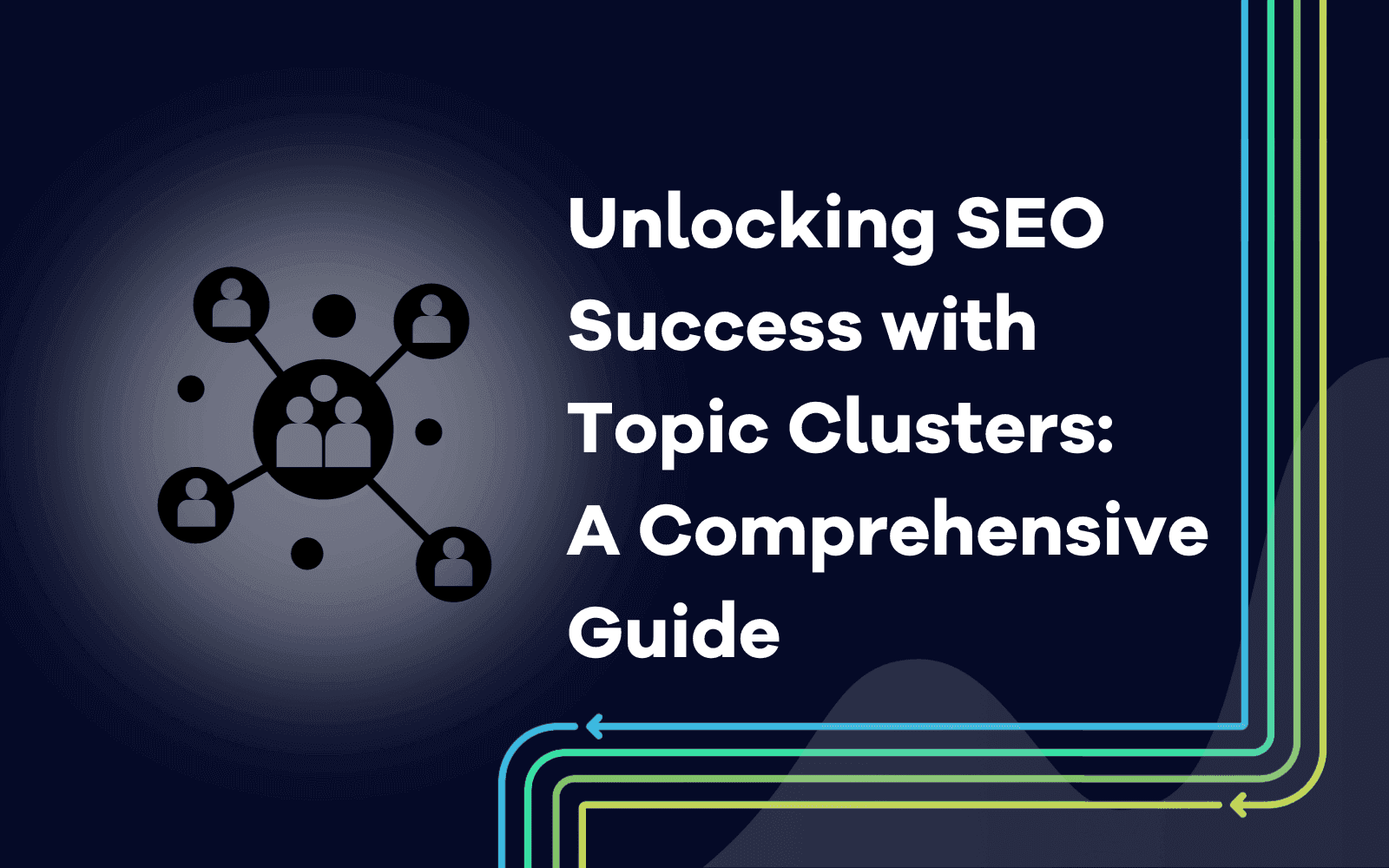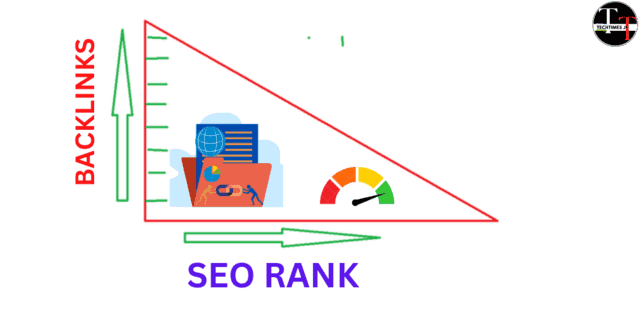Unlocking SEO Success with Topic Clusters: A Comprehensive Guide
Last updated on Friday, November 10, 2023

Topic clusters are a strategic approach to organizing and optimizing content on a website for search engine optimization (SEO). This concept takes on the idea that search engines, like Google, have evolved to prioritize content that demonstrates authority, expertise, and relevance on a particular topic.
Topic clusters are a valuable strategy for SEO as they align with search engine algorithms' increasing emphasis on topical authority and user satisfaction. They can help your website rank higher, attract more organic traffic, and provide value to your audience.
In modern SEO, topic clusters have become a game-changer. They are like the GPS for your website's journey to the top of search engine rankings. Search engines now prioritize content that showcases expertise and relevance on specific topics.
Topic clusters help to demonstrate your authority and provide a seamless user experience because of their pillar content and interlinked cluster pieces. If your goal is to be successful in SEO, topic clusters are your compass to navigate the complexities of search algorithms and user expectations.
Understanding topic clusters
In the ever-evolving world of search engine optimization (SEO), staying ahead of the curve is paramount to success. With increasingly sophisticated search engine algorithms today, a new approach came and is known as "topic clusters."
This strategy veers off from traditional keyword-focused SEO tactics. It is more effective in paving the way for higher ranks in search results, enhancing user engagement, and establishing authority within a niche.
Defining topic clusters in SEO

Topic clusters are a strategic way of organizing and optimizing content on a website. The basic idea behind topic clusters is to create a comprehensive resource on a specific topic or theme, demonstrating authority and expertise. The following key components are involved:
Pillar content: At the core of a topic cluster is the "pillar content." It is comprehensive and authoritative, covering a broad topic or theme relevant to your website or business.
The pillar content serves as the cornerstone of the cluster and provides an in-depth exploration of the primary subject. Pillar pages that are well-crafted and have organized related content boost website rank in search engine results pages (SERP). Pillar pages can get 200 times more backlinks and five times more referring domains than ordinary blog posts.
Pillar content typically offers an overview of a subject and provides a clear structure for your cluster. For instance, if your core topic is "Business Marketing," your pillar content might be a detailed guide on "The Fundamentals of Degree in Business Marketing."
Cluster content: When pillar content revolves around a theme, pieces that dive into specific subtopics or aspects of the pillar content are called "cluster content." Each cluster piece explores a facet of the main topic, offering more detailed information.
Internal linking: A crucial element of topic clusters is the network of internal links. Each cluster content piece links back to the pillar content, and the pillar content links to the relevant cluster content. This interlinking structure establishes a clear connection between the various pieces of content within the cluster, reinforcing the topic's authority. The best way to do this is to use descriptive keywords and use these as the anchor text to give the reader a brief overview of what the link will be about.
Keyword optimization: Each piece of content within the cluster gets optimized for specific keywords or key phrases associated with its topic. This keyword optimization helps search engines understand the relevance of your content to user queries.
User experience: Topic clusters are not just about appeasing search engines; they also prioritize delivering a superior user experience. By organizing content into clusters, visitors can easily navigate between related content, fostering longer time spent on your site and reducing bounce rates.
Differing from traditional keyword-focused strategies
Topic clusters differ significantly from traditional keyword-focused strategies in several key ways:
Content organization: Traditional SEO strategies often involve content targeting specific keywords or key phrases. Each page or post is optimized for a particular keyword. In contrast, topic clusters organize content around a central theme or "pillar" topic and then create related subtopics within the cluster. This approach provides a more structured and user-friendly content hierarchy.
Interlinking: In topic clusters, a strong emphasis is placed on interlinking between the pillar and cluster content. This internal linking strategy signals to search engines the relationship between different pieces of content and helps distribute authority and ranking value throughout the cluster. Traditional keyword-focused strategies may use internal linking but may not be as cohesive or systematic.
User experience: Topic clusters prioritize user experience by offering a comprehensive resource on a specific topic. Visitors can easily explore related content within the cluster, leading to longer on-site engagement and lower bounce rates. Traditional keyword-focused strategies may not offer the same content cohesion and user experience.
Authority and expertise: Modern search engines prioritize websites with expertise and authority on specific topics. Topic clusters allow you to showcase in-depth knowledge on a subject, boosting your site's credibility. In traditional keyword strategies, content tends to be more fragmented and may not build authority as effectively.
Adaptability: Topic clusters can evolve with changes in user search behavior and search engine algorithms. You can continually add new cluster content to stay relevant and update the pillar content. As trends change, traditional keyword strategies may require constant adjustments to target new keywords.
Long-term value: While traditional keyword-focused content can become outdated as search trends shift, well-structured topic clusters create a long-term content strategy. They remain valuable as you can continually update and expand the pillar and cluster content to stay current.
The advantages of using topic clusters for SEO
Topic clusters offer a range of advantages in modern SEO strategies, making them an invaluable tool for webmasters and content creators:
Improved search ranking: Search engines, including Google, increasingly prioritize content that demonstrates authority and expertise on specific topics. Topic clusters help you establish yourself as an authoritative source in your niche, potentially leading to higher search rankings and greater visibility in search results.
Enhanced user engagement: By providing a cohesive and structured content experience, topic clusters encourage visitors to explore related content on your website. This, in turn, leads to longer time spent on your site and a lower bounce rate, indicating higher user engagement.
Content organization: Topic clusters create an organized and logical structure for your content, helping search engines and users find and navigate your content more easily. This results in a more user-friendly website and can positively affect your SEO performance.
Staying current: The adaptability of topic clusters allows you to keep your content fresh and up-to-date. You can continually add new cluster content, update existing articles, and expand the pillar content as your industry or niche evolves.
Holistic authority building: Topic clusters enable you to build authority and expertise around a central theme highly favored by search engines. Over time, this can lead to stronger credibility and trustworthiness in the eyes of both search engines and users.
Why topic clusters matter in SEO: aligning with search engine evolution
Search engines have come a long way from their early days of simply matching keywords. The evolution of search engine algorithms has been driven by the need to provide users with the most relevant and valuable content. Understanding this evolution helps explain why topic clusters have become indispensable in SEO.
The evolution of search engine algorithms
In the early days of the internet, search engines primarily relied on keyword matching to determine a webpage's relevance to a user's query. However, as the internet expanded and more content was created, this approach became less effective.
It led to the rise of black-hat SEO practices, where websites would cram as many keywords as possible into their content to rank higher, often at the expense of user experience.
To combat this, search engines evolved. They focused on more sophisticated algorithms considering user engagement, authority, and content quality. For example, Google's Panda, Penguin, and Hummingbird updates refined how search results were generated. These updates penalized low-quality content and rewarded sites that offered in-depth, valuable information.
Prioritizing content relevance

Today, search engines like Google use complex algorithms focusing on more than keywords and backlinks. They prioritize content relevance and user intent. Here's how it works:
Content quality: Search engines evaluate the quality of content by looking at factors like originality, depth, and authority. High-quality content is more likely to rank well.
User engagement: Search engines measure how users interact with search results. Click-through rate (CTR), bounce rate, and dwell time (how long a user stays on a page) provide insights into user satisfaction and content relevance.
Semantic search: Google's Hummingbird update introduced semantic search, which enables search engines to understand the context and intent behind a search query, not just individual keywords.
Mobile-friendliness: With the increasing use of mobile devices, search engines prioritize mobile-friendly content, as it provides a better user experience.
Structured data: Search engines rely on structured data (schema markup) to better understand and display information in search results, such as rich and featured snippets.
How topic clusters align with search engine goals
This is where topic clusters come into play. They align seamlessly with the objectives of modern search engines:
Comprehensive coverage: Search engines favor websites that provide comprehensive, well-structured information on a subject. With their pillar content and related cluster pieces, topic clusters deliver a thorough resource that search engines can confidently present to users.
Internal linking: Search engines recognize that content interlinked logically and meaningfully signifies authority. Topic clusters utilize a systematic internal linking structure to highlight the interconnectedness of content pieces, making it easier for search engines to understand the relationships within the cluster.
User experience: Search engines measure user engagement and satisfaction. When users find a well-organized, topic-focused resource with clear navigation, they are more likely to spend time on the site, view multiple pages, and have a positive user experience.
Adaptability: As search trends evolve and user queries change, topic clusters allow you to adapt your content strategy. You can create new cluster content to address emerging topics and update the pillar content, ensuring your site remains current and relevant.
In essence, topic clusters answer the demands of modern search engines. They offer a logical, user-friendly, and comprehensive approach to content, enabling websites to excel in the ever-competitive landscape of SEO. By aligning with search engine goals, topic clusters help you provide what users and algorithms seek: valuable, relevant, and well-structured content.
Building an Effective Topic Cluster
Now, let's explore how to build an effective topic cluster while highlighting the role of internal linking:
- Role of internal linking within topic clusters:
Internal linking plays a vital role in topic clusters for several reasons:
Establishing relevance: Internal links from cluster content to the pillar content signal to search engines that the cluster content is related and relevant to the core topic. This strengthens your site's authority on the subject.
Enhancing user experience: Internal links make it easy for readers to navigate through your content ecosystem. If someone reads an article on "Effective Strength Training Exercises for Beginners" and sees a link to the "Ultimate Guide to Strength Training," they can easily access the foundational content for more information.
Spreading link equity: Internal links also distribute the link equity (SEO value) across your cluster, which can help improve the search rankings of your cluster content, and, consequently, the pillar content.
- Examples to illustrate the concept:
Pillar content example: Suppose you have a fitness website, and your core topic is "Strength Training." Your pillar content might be a comprehensive guide titled "The Ultimate Guide to Strength Training." This guide covers the basics, benefits, equipment, and strength training techniques. It provides an all-encompassing view of the topic.
Cluster content examples: Under the "Strength Training" pillar content, you could have various cluster content pieces:
"Effective strength training exercises for beginners": This article delves into specific exercises suitable for newcomers to strength training.
"Nutrition tips for maximizing strength gains": This article focuses on the dietary aspects of strength training.
"Advanced strength training techniques": Here, you can explore advanced methods and workouts for experienced strength trainers.
Each cluster content piece links back to the pillar content, strengthening the interconnected web of content.
Developing Cluster Content
Cluster content is a crucial element of a content marketing strategy that aims to improve a website's SEO, user experience, and overall content organization. It plays a supportive role in enhancing the visibility and authority of pillar content. Let us delve into the specifics:
Role of cluster content in supporting pillar content
Pillar and cluster content are part of a content strategy that utilizes a topic cluster model. In this model, pillar content is a comprehensive and in-depth piece of content that serves as your content strategy's core topic or cornerstone. Cluster content, on the other hand, consists of related subtopics and articles that link back to the pillar content. The role of cluster content is as follows:
Support pillar content: Cluster content provides a framework to expand on the various subtopics, related questions, and nuances of the core topic covered in the pillar content. It helps build a comprehensive and interconnected content ecosystem around the central theme.
Enhance SEO: By linking cluster content back to the pillar content and interlinking cluster content pieces, you create a web of interconnected content that search engines can easily index. This helps improve your website's SEO by signaling the authority and depth of your content on the core topic.
Improve user experience: When users visit your website to learn about a specific topic, they can easily navigate to related content through internal links. This enhances their experience by providing a wealth of information on the topic without leaving your site.
Guidance on selecting cluster topics
Selecting the right cluster topics is essential for an effective content strategy. Here is how to choose them:
Relevance: Cluster topics should be closely related to the pillar content. They should be subtopics, specific questions, or related aspects of the core topic. Think about what additional information or questions someone might have when reading the pillar content.
Keyword research: Conduct keyword research to identify related keywords and phrases people commonly search for. This can help you find cluster content ideas likely to attract organic traffic. Targeting the right keywords, selecting less competitive ones, and aligning with user intent are some things to consider when conducting keyword research.
User intent: Consider the intent of your audience. What questions are they trying to answer, and what information are they seeking regarding the core topic? Use this insight to shape your cluster content.
Competitor Analysis: Analyze what your competitors are doing regarding cluster content. Can you fill gaps in their coverage with your own cluster content?
Importance of relevance and depth in cluster content
Relevance and depth are critical factors in the success of cluster content:
Relevance: Cluster content must be directly related to the pillar content to ensure that it adds value and provides a cohesive user experience. Irrelevant content can confuse readers and dilute the authority of your site.
Depth: Cluster content should explore subtopics in detail. It should be informative and comprehensive, providing in-depth insights, practical advice, and answers to specific questions. High-quality, comprehensive content benefits the reader and signals to search engines that you are an authority on the subject.
Executing a topic cluster strategy: a step-by-step guide
1. Conducting keyword research
Begin by researching keywords related to your niche. Identify high-traffic keywords and long-tail phrases to target. You can utilize tools for assistance like SEMrush, Google Keyword Planner, or Ahrefs. Look for keywords with search volume and user intent. Tip: Focus on keywords that align with your business goals and audience needs.
2. Planning pillar content
Select a broad, central topic for your pillar content. This should be a comprehensive guide or resource. Consider user intent and create an outline. Tip: Aim for unique, value-packed pillar content that addresses a common question or problem within your niche.
3. Creating cluster content
Create a list of subtopics related to the pillar content based on your keyword research. Each subtopic will become a piece of cluster content. Craft these articles with depth, offering valuable insights. Tip: Make each cluster piece unique and relevant, targeting specific keywords while providing comprehensive information.
4. Internal linking strategy
Strategically interlink your pillar and cluster content. In the pillar content, link to cluster articles when relevant; in cluster articles, link back to the pillar content. Ensure these links are natural and user-friendly. Tip: Use descriptive anchor text that hints at the content's topic.
Implementing a topic cluster strategy is an ongoing process. Regularly update and expand your cluster content, addressing emerging topics and keeping your content current. Monitor the performance of your cluster pieces and the impact on SEO rankings.
Over time, you will establish authority on your chosen topic, attract more organic traffic, and provide a valuable resource for your audience.
Measuring and refining your topic cluster strategy

Source: Wikimedia Commons
Tracking and analyzing performance metrics is crucial for assessing the effectiveness of your topic cluster strategy and making data-driven refinements. Here is how to do it effectively:
Importance of tracking metrics
SEO performance: Monitor search rankings, organic traffic, and click-through rates (CTR). Improvements in these areas can indicate the success of your strategy.
User engagement: Monitor metrics like time on page, bounce rate, and page views per session. Increased engagement signifies that users are finding value in your content.
Conversions: Be sure to track conversion rates, whether you are just signing up for a newsletter, purchasing, or other actions. This demonstrates the impact of your content on your business goals.
Monitoring strategy success
Regular analysis: Review your SEO analytics periodically to assess pillar and cluster content performance.
Keyword rankings: Check if your pillar content and cluster pieces rank well for their target keywords.
Internal linking: Ensure your internal linking structure is effective, providing a smooth user experience and strengthening content relationships.
Making adjustments and improvements
Content updates: Based on performance data, update and expand pillar and cluster content as needed to address changing user needs and trends.
Keyword optimization: If certain cluster pieces are underperforming, consider re-optimizing them for more relevant or effective keywords.
Linking strategy: Adjust your internal linking strategy to reinforce the connections between pillar and cluster content.
New cluster topics: Consider adding fresh cluster content if data reveals relevant topics.
You can adapt to evolving search trends, user behavior, and industry developments by continuously measuring, analyzing, and refining your topic cluster strategy. This iterative approach ensures that your content remains a valuable resource and that your SEO efforts remain effective over time.
Case studies and real-life examples
Let us look at a couple of real-world examples of successful topic cluster implementations:
1. HubSpot's content strategy
HubSpot, a leader in inbound marketing, implemented a topic cluster strategy centered around inbound marketing topics. Their pillar content covered the fundamentals of inbound marketing, while cluster pieces explored facets like "email marketing," "content strategy," and "SEO." This approach led to a significant increase in organic traffic and a 25% lead boost within just a few months.
2. Moz's SEO learning center
Moz, an authority in the SEO industry, created a comprehensive SEO Learning Center as its pillar content. Cluster content delved into specific SEO topics like "keyword research" and "link building." Their data showed a 30% increase in organic search traffic within a year, with users spending more time on their site due to the organized cluster structure.
When executed effectively, these case studies demonstrate that well-structured topic clusters can lead to substantial improvements in organic traffic, user engagement, and overall online authority.
Conclusion
In the dynamic world of search engine optimization, topic clusters have emerged as a transformative strategy, redefining how we approach content organization and user engagement. As search engines have evolved, the emphasis has shifted from mere keyword matching to providing authoritative, relevant, and user-friendly content.
Topic clusters align perfectly with these evolving algorithms and cater to the demands of modern users seeking comprehensive resources.
By understanding the fundamentals of topic clusters, their importance, and the step-by-step guide for their implementation, you can unlock a powerful tool to enhance your website's SEO. With improved search rankings, enhanced user engagement, and long-term content value, topic clusters are the compass guiding your digital journey.
Real-world success stories from industry leaders like HubSpot and Moz underscore the potential of topic clusters to drive organic traffic and establish authority. As SEO evolves, embracing the topic cluster strategy will ensure your website remains a valuable resource, adapting to changing trends and user preferences. In this dynamic landscape, topic clusters are key to achieving SEO success, delivering what users and algorithms truly seek: informative, relevant, and structured content.

Article by:
Natasha
Marketing Specialist
Natasha is a content marketing specialist who thinks it's kind of fun creating content marketing strategies for SaaS businesses.


